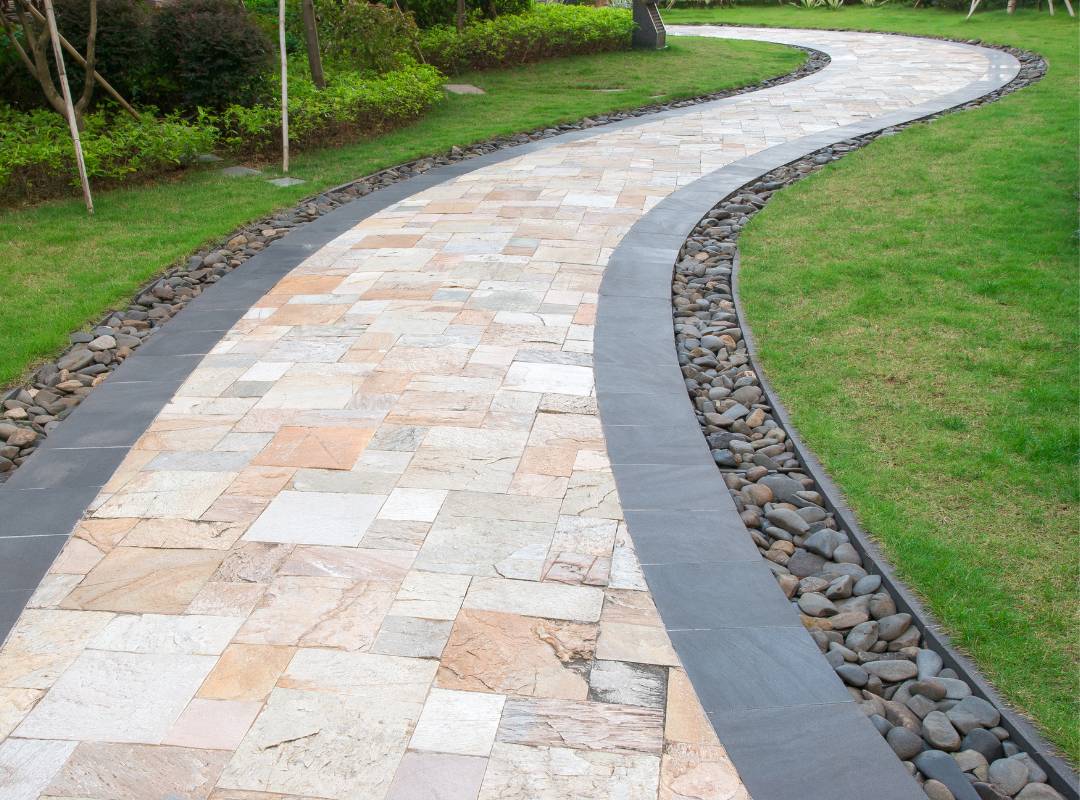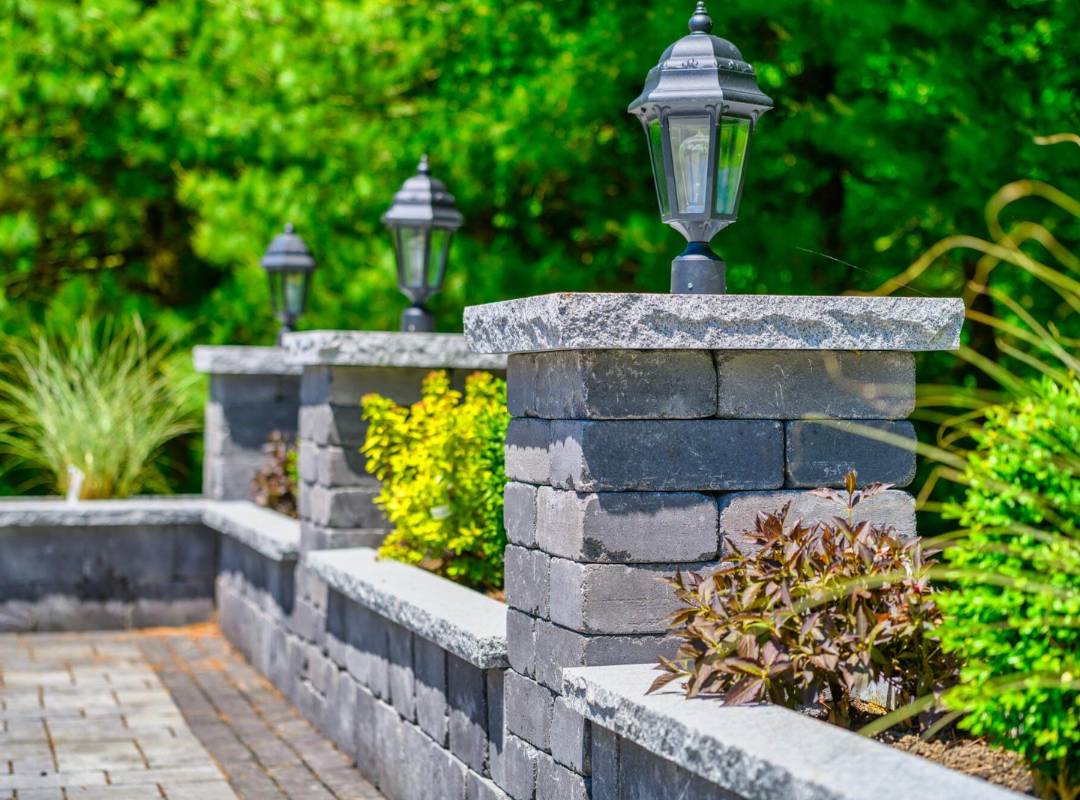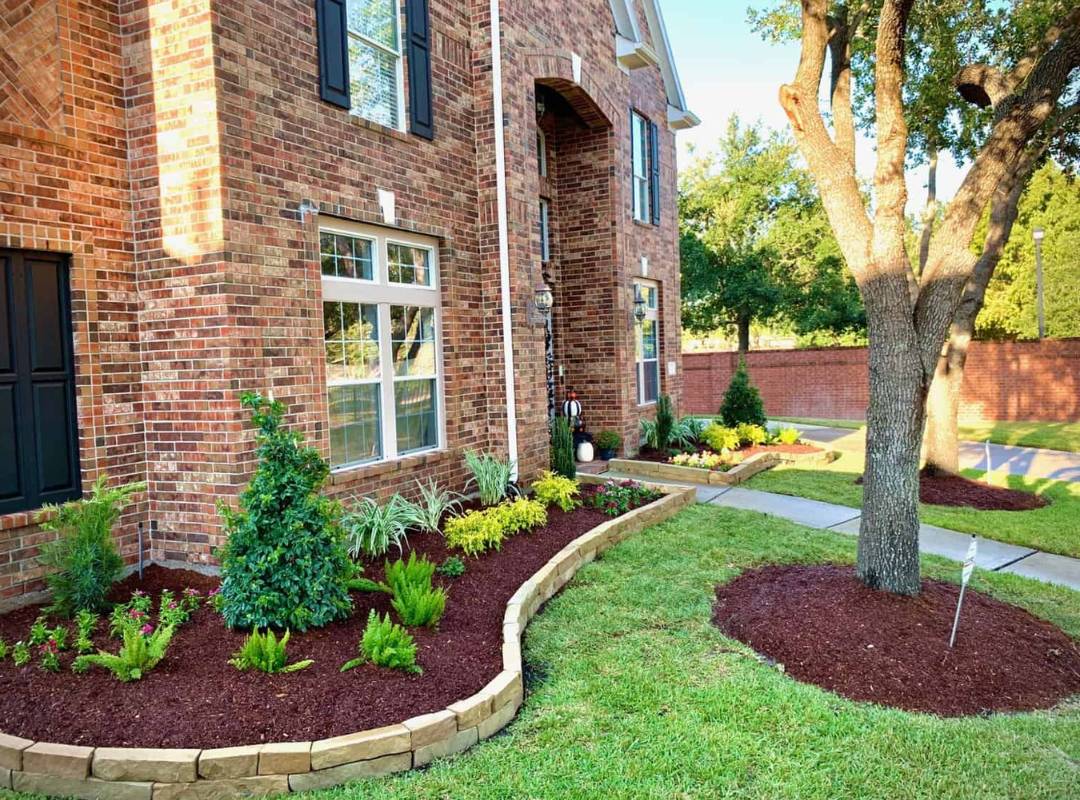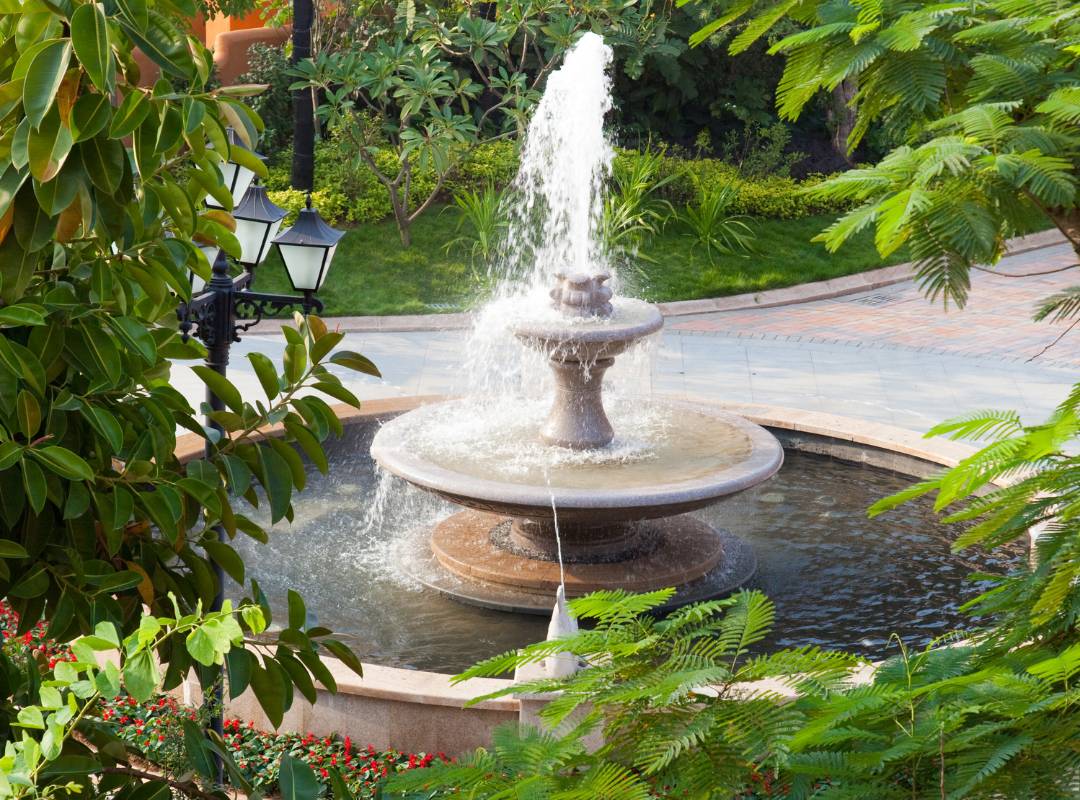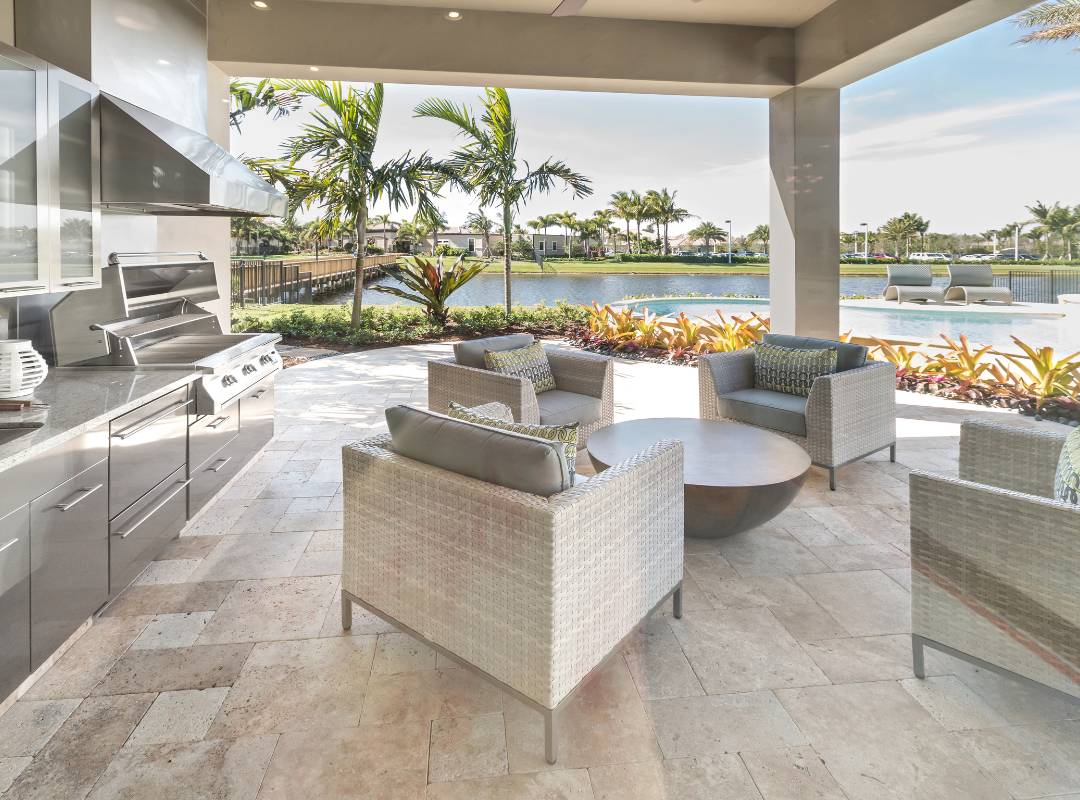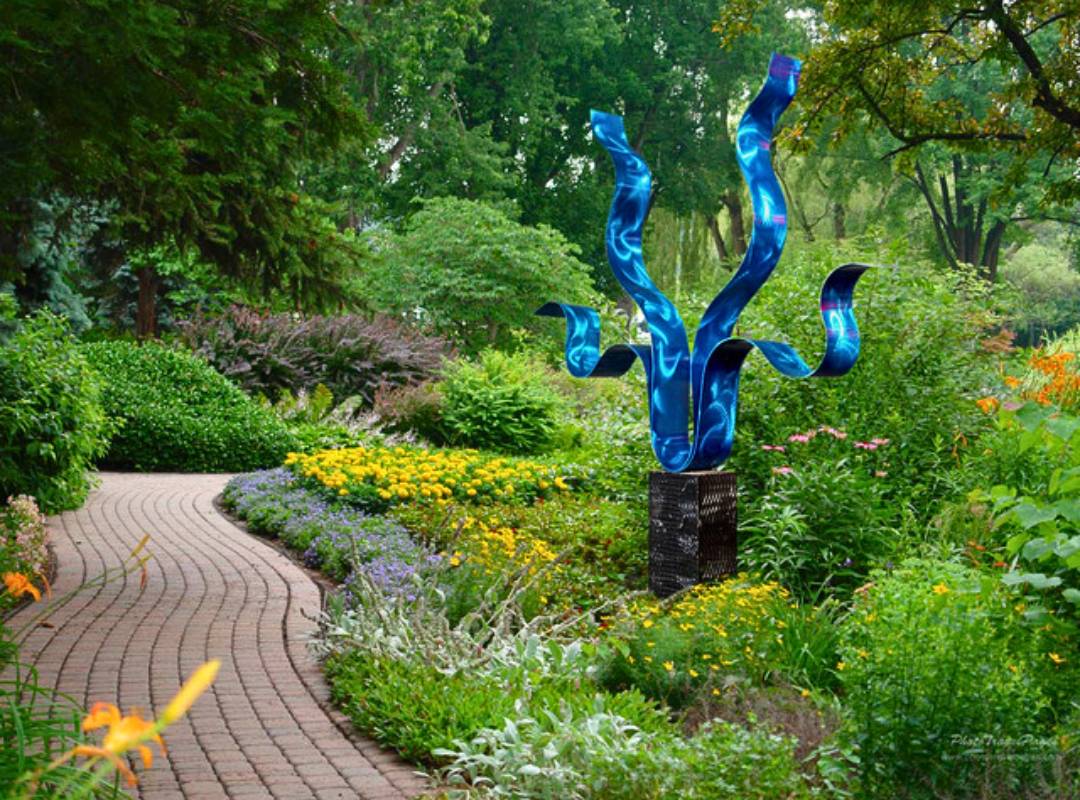|
In the realm of landscaping, hardscaping plays a pivotal role in adding structure, functionality, and aesthetic appeal to outdoor spaces. From pathways that guide your footsteps to retaining walls that define terraced gardens, the possibilities of creative hardscape design are endless. In this blog post, we'll explore unique and imaginative ideas to incorporate hardscaping elements like stones, bricks, and concrete into your landscape design, transforming your outdoor environment into a work of art. Custom-Designed PathwaysExploring Custom-Designed Pathways: Adding Charm and Functionality to Your Landscape Pathways in a garden or yard do more than just connect points A to B; they can be artistic expressions that enhance the beauty and functionality of your outdoor space. Custom-designed pathways, in particular, offer a unique opportunity to infuse personality and style into your landscape design. Let's delve into some creative ideas for designing pathways that go beyond the ordinary. 1. Curved Pathways for a Serene Journey Instead of straight paths, consider incorporating gentle curves into your pathways. Curved pathways create a sense of flow and harmony with the natural landscape. They encourage exploration and invite visitors to slow down and appreciate the beauty around them. Curves can be subtle or dramatic, depending on the overall theme of your garden. 2. Mixing Materials for Texture and Visual Appeal One of the keys to a captivating pathway is the use of diverse materials. Combine elements like flagstone, gravel, pavers, and mulch to add texture and visual interest. For example, use flagstone for the main pathway, bordered by gravel or mulch for a contrasting edge. This mix of materials not only looks appealing but also adds depth and character to the pathway. 3. Integrating Stepping Stones for Whimsy Stepping stones are not just functional; they can also add a touch of whimsy to your pathways. Place them strategically to create a playful route through your garden. Stepping stones can be round, square, or irregular in shape, adding a naturalistic feel to the path. They are especially charming when surrounded by lush greenery or colorful flowers. 4. Meandering Paths for Discovery Meandering pathways mimic the organic patterns found in nature, winding gently through your garden. These paths create a sense of discovery, as each turn reveals new vistas or hidden garden nooks. Meandering paths are perfect for larger landscapes, allowing you to showcase different garden areas and focal points along the way. 5. Lighting for Evening Enchantment Don't forget to consider lighting when designing your pathways. Strategic lighting along the edges or embedded in the pathway itself can transform your garden into a magical space after dark. Use soft, warm lights to highlight the path and create a welcoming ambiance for evening strolls or outdoor gatherings. Custom-designed pathways offer endless possibilities for creativity in landscaping. Whether you prefer a serene and meandering path or a playful route with stepping stones, the key is to integrate elements that reflect your personal style and enhance the overall beauty of your outdoor space. With thoughtful design and attention to detail, your pathways can become captivating features that delight both guests and residents alike. Artistic Retaining WallsRetaining walls serve both functional and aesthetic purposes in landscaping, and while traditional concrete walls are practical, artistic retaining walls elevate the beauty of your outdoor space to a whole new level. Let's explore how you can use natural elements and creative design to craft stunning and functional artistic retaining walls. Embracing Natural Beauty One of the key elements of artistic retaining walls is their integration with the natural environment. Instead of uniform concrete blocks, consider using natural stone. Natural stone walls offer a rustic charm and blend seamlessly with the landscape. Opt for stones with irregular shapes and varying sizes to create a more organic and visually appealing structure. Play with Shapes and Heights Artistic retaining walls don't conform to straight lines and uniform heights. Experiment with curved walls that follow the contours of your land, creating a fluid and dynamic appearance. Varying heights along the wall not only add visual interest but also serve practical purposes such as terracing sloped areas for planting or creating distinct levels in your outdoor space. Blend Different Stone Types Mixing different types of stones adds depth and texture to your retaining wall. Combine rugged fieldstone with smoother river rocks or incorporate colorful slate for a striking contrast. The interplay of textures and colors creates a visually captivating feature that enhances the overall aesthetics of your landscape. Functional Additions Artistic retaining walls can be more than just structural elements. Consider integrating built-in seating along the wall, providing a cozy and inviting space to relax and enjoy your outdoor surroundings. You can also incorporate planters into the wall design, adding greenery and softening the hardscape with lush vegetation. Customization and Personalization The beauty of artistic retaining walls lies in their versatility and customizability. Work with a landscape designer to tailor the wall design to suit your preferences and complement the style of your home and outdoor space. Add decorative elements such as inset lighting to illuminate the wall at night, creating a captivating ambiance. Maintenance and Durability While artistic retaining walls focus on aesthetics, durability and functionality remain paramount. Choose high-quality materials and ensure proper installation to guarantee the longevity of your retaining wall. Regular maintenance, such as inspecting for cracks or loose stones and addressing any drainage issues, will help preserve the beauty and integrity of your artistic creation. Artistic retaining walls are not just structural components but artistic expressions that enhance the beauty and functionality of your landscape. By embracing natural elements, playing with creative designs, and adding functional features, you can transform a mundane retaining wall into a captivating focal point that elevates your outdoor living experience. Consult with landscaping professionals to bring your artistic vision to life and create a landscape that delights the senses and inspires admiration. Decorative Garden BordersBorders and edging are not just functional aspects of your garden; they are opportunities to infuse creativity and charm into your outdoor space. By exploring unique materials and design concepts, you can elevate your garden's aesthetics while also promoting eco-friendly practices. 1. Reclaimed Bricks: Timeless Charm with Sustainability One of the most enduring materials for garden borders is reclaimed bricks. These weathered and character-rich bricks add a touch of history and charm to your garden while also promoting sustainability by repurposing materials. Arrange them in a classic straight line for a traditional look, or get creative with patterns and designs for a more intricate border that complements your garden's style. 2. Rustic Railway Sleepers: Natural Elegance For a rustic and natural border, consider using railway sleepers. These sturdy wooden beams bring a sense of rugged elegance to your garden borders. You can opt for untreated sleepers for a weathered look or stain them to match your garden's color palette. Their substantial presence adds definition to flower beds and pathways, creating a striking visual impact. 3. Curved Edges: Soft and Organic Lines Move away from rigid straight lines and embrace curved edges for a softer and more organic feel. Curved borders mimic the fluidity of nature, blending seamlessly with the surrounding landscape. Use flexible materials like bendable metal edging or create gentle curves with bricks or stones. This approach adds a sense of movement and grace to your garden borders. 4. Integration of Low-Growing Plants: Greenery as a Border Go beyond traditional borders by integrating low-growing plants along the edges. Ground covers like creeping thyme, sedum, or ajuga not only soften the transition between hardscape and garden beds but also add texture, color, and seasonal interest. Choose plants that thrive in your climate and complement your overall garden design. 5. Mixing Materials for Contrast and Interest For a visually dynamic border, mix different materials to create contrast and interest. Combine stones with bricks, or incorporate metal elements alongside wooden edging. This eclectic approach adds depth and personality to your garden borders, making them standout features within your landscape. 6. Sustainable Practices: Eco-Friendly Border Solutions Incorporate sustainability into your garden borders by choosing materials with eco-friendly credentials. Opt for locally sourced or reclaimed materials whenever possible. Consider permeable edging options that allow water to flow through, promoting healthy soil and drainage. By prioritizing sustainability, you not only enhance your garden's beauty but also contribute positively to the environment. Decorative garden borders offer endless opportunities for creativity and expression. Whether you prefer the timeless appeal of reclaimed bricks, the natural elegance of railway sleepers, or the fluidity of curved edges, there's a border style to suit every garden aesthetic. By integrating low-growing plants and embracing sustainable practices, you can create borders that not only define your garden spaces but also contribute to a greener and more beautiful outdoor environment. Explore these ideas and transform your garden borders into captivating features that elevate your entire landscape. Statement Water FeaturesWater features are not just accessories for your outdoor space; they are statements of serenity, elegance, and style. While a standard fountain can be charming, creating a custom-designed water feature can elevate your landscape design to new heights, turning your garden into a tranquil retreat. Here are some ideas to inspire you to create a statement water feature that will captivate your senses and those of your guests. 1. Natural Boulders and Cascading Waterfalls Imagine a scene where natural boulders are strategically placed to create a cascading waterfall. The sound of water gently trickling down these rocks creates a soothing ambiance, inviting you to relax and unwind. Incorporating indigenous stones and plants around the waterfall adds to its natural charm, blending seamlessly with the surrounding landscape. 2. Serene Pond with Lush Vegetation A serene pond can be the focal point of your outdoor space, especially when surrounded by lush vegetation. Imagine colorful water lilies floating gracefully on the surface, while koi fish swim beneath. Add a wooden deck or stone pathway around the pond to create a peaceful retreat where you can sit and enjoy the tranquil beauty of nature. 3. Fire and Water Harmony For a dramatic and captivating effect, consider combining water with fire elements. A fire pit or fire bowl near a water feature creates a mesmerizing contrast, especially in the evening. The flickering flames dance against the backdrop of flowing water, casting a warm glow and enhancing the ambiance for outdoor gatherings or quiet evenings under the stars. 4. Architectural Water Walls Architectural water walls add a modern and artistic touch to your outdoor space. These sleek structures can be customized to complement your existing landscape design. Water gently cascades down the walls, creating a sense of movement and adding a contemporary flair to your garden or patio. Statement water features not only enhance the visual appeal of your outdoor oasis but also create a calming atmosphere that rejuvenates the soul. Whether you prefer the natural beauty of boulders and waterfalls or the harmonious blend of fire and water elements, a custom-designed water feature can transform your garden into a captivating retreat. Explore these ideas and let your imagination flow as you create a water feature that reflects your unique style and enhances your outdoor living experience. Functional Outdoor Living SpacesLandscaping and outdoor design, functionality is just as important as aesthetics. Creating functional outdoor living spaces not only adds value to your property but also enhances your overall lifestyle by providing areas for relaxation, entertainment, and enjoyment of nature. Here are some practical tips to consider when designing functional outdoor spaces: Choose Durable Materials: Start by selecting durable materials that can withstand outdoor elements and heavy use. Options like stamped concrete, composite decking, and natural stone are not only resilient but also add a touch of elegance to your outdoor areas. Design with Purpose: Consider the purpose of each outdoor space. Are you looking to create a cozy seating area for intimate gatherings, a spacious deck for family barbecues, or a serene garden retreat for quiet moments? Tailor the design to meet your specific needs and preferences. Integrate Built-in Features: Incorporate built-in features that enhance usability and comfort. Built-in seating, for example, can provide ample seating space without cluttering the area with bulky furniture. Fire pits or outdoor fireplaces add warmth and ambiance, extending the usability of your outdoor space into cooler evenings. Outdoor Kitchens: For those who love outdoor cooking and entertaining, consider adding an outdoor kitchen. Include amenities such as a grill, countertops, storage cabinets, and even a sink for convenience. An outdoor kitchen transforms your backyard into a culinary oasis perfect for hosting gatherings and enjoying meals al fresco. Create Zones: Divide your outdoor space into functional zones based on activities. Separate areas for dining, lounging, and recreation can create a well-organized and versatile outdoor living environment. Use pathways, pergolas, or planters to delineate these zones while maintaining a cohesive design. Consider Shelter: Depending on your climate and preferences, consider adding sheltered areas such as pergolas, gazebos, or covered patios. These structures provide shade from the sun, protection from light rain, and can be outfitted with outdoor curtains or screens for added privacy. Incorporate Greenery: Don't forget to integrate landscaping elements into your design. Incorporate plants, trees, and flowers strategically to add beauty, shade, and a connection to nature within your outdoor living spaces. Lighting for Ambiance: Extend the usability of your outdoor spaces into the evening by incorporating appropriate lighting. Use a combination of overhead lights, pathway lighting, and accent lighting to create ambiance, enhance safety, and highlight key features of your outdoor design. Accessorize Thoughtfully: Add finishing touches with outdoor accessories such as cushions, rugs, decorative planters, and outdoor artwork. Choose weather-resistant materials that can withstand outdoor conditions while adding style and personality to your space. Maintain Functionality: Lastly, ensure that your functional outdoor spaces are easy to maintain. Choose low-maintenance materials, implement efficient irrigation systems for plantings, and regularly clean and upkeep outdoor furniture and fixtures to preserve their functionality and appearance. By combining practicality with thoughtful design, you can create outdoor living spaces that not only look beautiful but also serve as functional extensions of your home, allowing you to fully enjoy and make the most of your outdoor lifestyle. Sculptural Elementsincorporating sculptural elements can transform a mundane outdoor space into a captivating work of art. These artistic additions not only enhance the visual appeal but also infuse your landscape with personality and flair. Let's delve into how you can use sculptural elements to elevate your hardscape design.
1.Sculptural Focal Points Introducing a sculptural focal point can instantly draw attention and create a focal point in your landscape. Consider these ideas: Abstract Metal Sculptures: Modern and sleek, abstract metal sculptures bring a contemporary edge to your outdoor space. Place them strategically amidst greenery or against a plain wall to create a striking contrast. Ornate Gates: A beautifully crafted gate can serve as both a functional entry point and a stunning piece of art. Choose intricate designs that complement your overall theme, whether it's classic, rustic, or modern. Carved Stone Features: From intricately carved stone benches to majestic stone pillars, incorporating natural stone elements adds a timeless and elegant touch to your hardscape. 2. Reflecting Style and Creativity Sculptural elements offer a unique opportunity to showcase your style and creativity. Here's how: Customized Sculptures: Work with a local artist or sculptor to create bespoke sculptures that reflect your personality. This could be anything from a whimsical animal sculpture to a thought-provoking abstract piece. Themed Sculptures: Align sculptural elements with a theme or motif in your landscape design. For example, if you have a Mediterranean-inspired garden, opt for sculptures that echo the region's cultural motifs. Functional Art: Merge functionality with art by incorporating sculptural elements into practical features like seating or water fountains. This not only adds aesthetic value but also enhances usability. 3. Integration with Nature Blend sculptural elements seamlessly with the natural surroundings for a harmonious look: Organic Shapes: Choose sculptures with organic shapes and forms that mimic elements found in nature, such as flowing curves or leaf-inspired designs. Natural Materials: Opt for materials like weathered wood, natural stone, or rusted metal to create a rustic yet refined appeal that complements the landscape. Strategic Placement: Place sculptures strategically to create visual interest and guide the flow of movement through your outdoor space. Consider viewpoints from different angles to maximize their impact. 4. Maintenance and Care Regular maintenance is key to preserving the beauty of sculptural elements: Cleaning: Depending on the material, sculptures may require periodic cleaning to remove dirt, debris, or weathering effects. Protection: Consider protective coatings or treatments to safeguard sculptures from environmental factors like sun exposure, moisture, and corrosion. Inspection: Routinely inspect sculptures for any signs of damage or wear, addressing issues promptly to prevent further deterioration. Conclusion Creative hardscape design goes beyond functionality; it's about infusing your outdoor space with personality, beauty, and functionality. By exploring unique ideas such as custom-designed pathways, artistic retaining walls, decorative borders, statement water features, functional outdoor living spaces, and sculptural elements, you can transform your landscape into a captivating retreat that reflects your individuality and enhances your outdoor living experience. Comments are closed.
|
Categories
All
Related PagesArchives
July 2024
|

